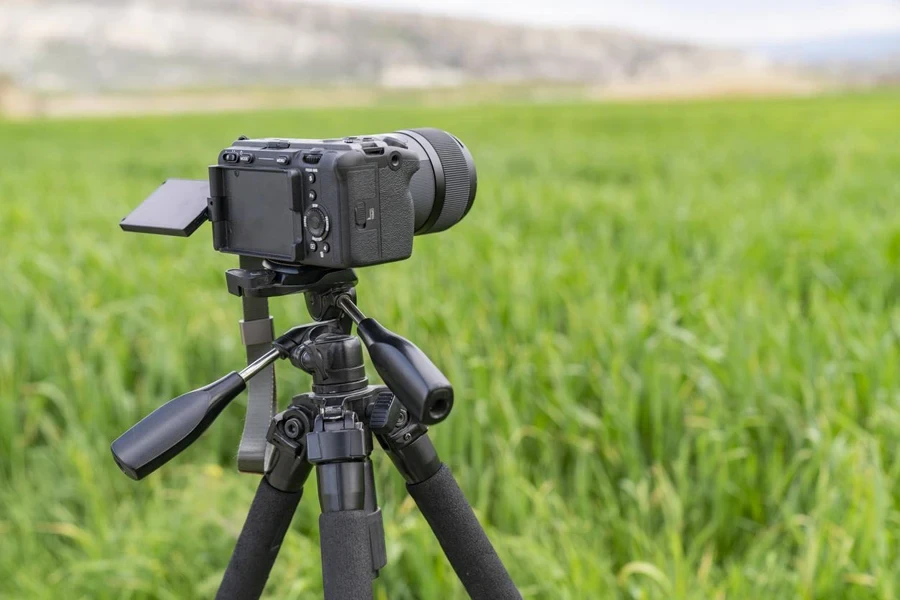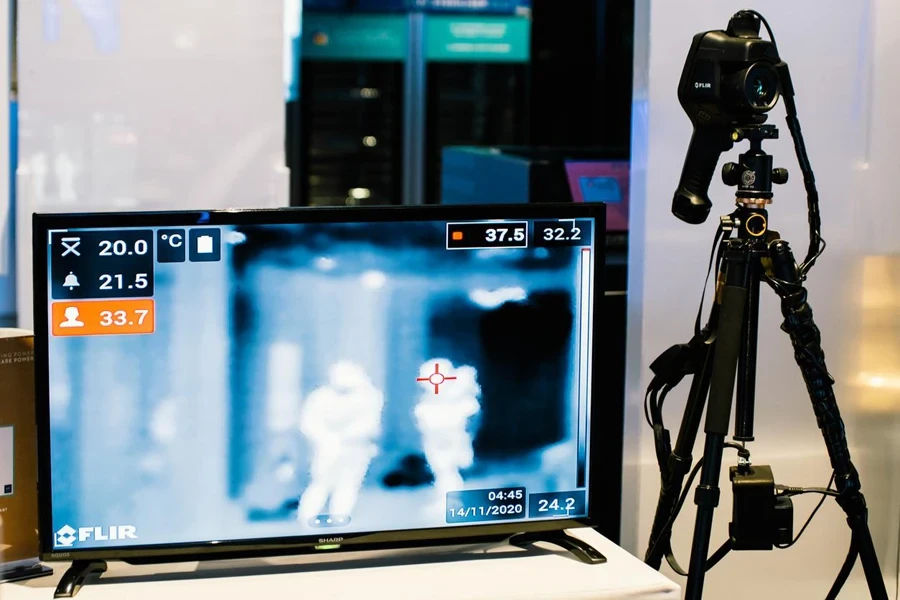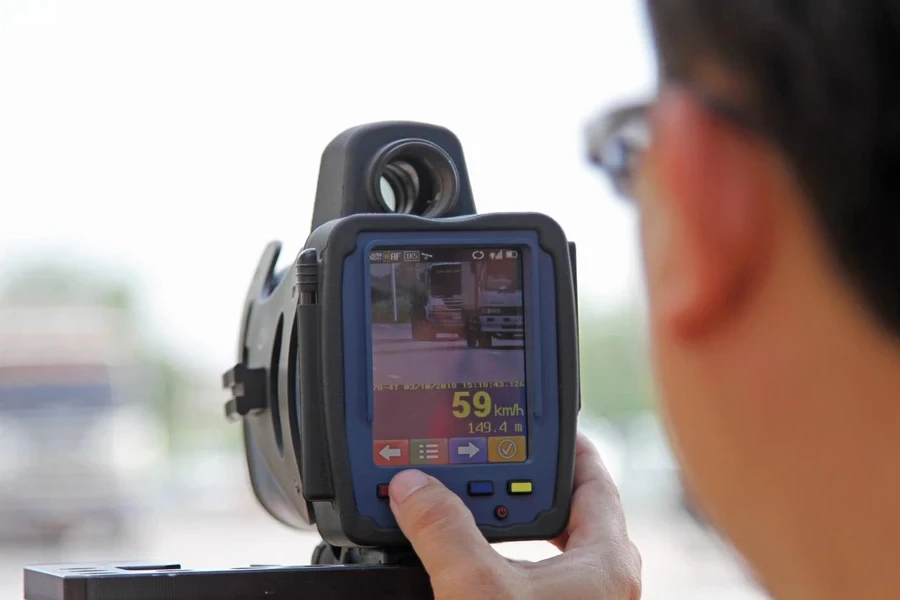Choosing the right camera field monitor is crucial for professional videography and photography in 2024. These devices enhance video production by providing a larger, clearer view of the footage, ensuring precise focus, exposure, and color accuracy. Camera field monitors are invaluable tools for filmmakers and content creators, offering features like high-resolution displays, HDR support, and advanced connectivity options. By integrating these monitors into their setups, professionals can achieve superior video quality, streamline their workflows, and make more informed decisions during shoots. The right monitor can transform the filming experience, leading to more polished and professional results.
Table of Contents
1. Understanding camera field monitors
2. Current market landscape
3. Key factors in selecting a camera field monitor
4. Top camera field monitors in 2024
5. Conclusion
Understanding camera field monitors

Definition and importance
Camera field monitors are external displays that connect to a camera to provide a larger, clearer view of the footage being recorded. They play a crucial role in enhancing video production by offering features such as high resolution, accurate color representation, and advanced monitoring tools. These monitors help professionals in achieving precise focus, proper exposure, and effective framing, which are essential for creating high-quality content. The use of camera field monitors is especially beneficial in professional settings where the built-in screens of cameras are insufficient for detailed video analysis and adjustments.
Types of camera field monitors
There are several types of camera field monitors, each catering to different needs and preferences. On-camera monitors are mounted directly onto the camera, providing a convenient and compact solution for videographers who need to move frequently. Wireless monitors eliminate the need for cables, allowing for greater flexibility and ease of movement on set. HDR (High Dynamic Range) monitors are designed to display a wider range of colors and brightness levels, making them ideal for capturing scenes with high contrast. Portable monitors are lightweight and easy to transport, making them suitable for outdoor shoots and travel.
On-camera monitors: These are small, lightweight monitors that attach to the camera. They are perfect for run-and-gun shooting and situations where mobility is key. Popular models include the Atomos Shinobi and the Lilliput A7s, both known for their compact design and high-quality displays.
Wireless monitors: These monitors offer the convenience of a cable-free setup, allowing for greater flexibility on set. They are equipped with built-in transmitters and receivers, enabling real-time monitoring from a distance. The Hollyland Mars M1 is an example of a wireless monitor that provides excellent performance with low latency.
HDR monitors: HDR monitors provide a higher dynamic range, allowing for better representation of bright and dark areas in the footage. This is particularly useful for scenes with high contrast. The Atomos Ninja V+ is a popular choice for its HDR capabilities and support for various log formats.
Portable monitors: These monitors are designed for easy transport and use in various locations. They are lightweight and often come with features like battery power and sun hoods for outdoor use. The FEELWORLD F6+ is a notable portable monitor that offers a good balance of size, weight, and functionality.
Common uses
Camera field monitors are versatile tools used in a variety of professional applications. In filmmaking, they allow directors and cinematographers to view and adjust the shot in real-time, ensuring that the footage meets their creative vision. Monitors like the Blackmagic Video Assist 5” 12G HDR are favored for their ability to capture high-resolution video and provide accurate color representation, which is essential for post-production work.
For vloggers and content creators, camera field monitors offer the ability to see themselves while recording, making it easier to maintain proper framing and focus. The Atomos Shinobi, with its lightweight design and high-quality display, is a popular choice among vloggers for these reasons.
In live streaming, camera field monitors provide a real-time view of the broadcast, allowing for immediate adjustments to lighting, focus, and composition. This ensures that the live stream maintains a professional quality. Monitors with low latency and high brightness, such as the Hollyland Mars M1, are particularly useful in this context.
Camera field monitors are also used in various other professional settings, including event videography, sports broadcasting, and wildlife filming. Their ability to provide a clear and detailed view of the footage makes them indispensable tools for any video production task. By integrating these monitors into their setups, professionals can achieve superior video quality, streamline their workflows, and make more informed decisions during shoots.
Current market landscape

Market growth and trends
The camera field monitor market has experienced substantial growth over the past few years, driven by the increasing demand for high-quality video production. According to recent statistics, the global market for camera field monitors is projected to grow at a compound annual growth rate (CAGR) of 8.5% from 2023 to 2028. This growth is fueled by advancements in display technology, the rise of content creation across various platforms, and the need for professional-grade video equipment in both commercial and personal projects.
Experts currently value the camera field monitor market at USD 1.02 billion, and they expect it to reach USD 1.67 billion by 2028. They estimate this boost will happen at a 7.8% compound annual growth rate (CAGR) from 2023 to 2028.
The adoption of 4K and 8K resolution cameras has significantly contributed to the market’s expansion. As filmmakers and videographers seek to enhance their production quality, the demand for monitors that can accurately display these high resolutions has surged. Additionally, the integration of HDR (High Dynamic Range) capabilities in camera field monitors has become a key trend, providing more vivid and lifelike images. Wireless technology has also become more prevalent, offering greater flexibility and convenience on set, which further boosts market growth.
Leading brands
Several brands have established themselves as leaders in the camera field monitor market, each offering a range of products that cater to different needs and budgets. Atomos is one of the most prominent names, known for its high-quality monitors like the Atomos Ninja V+ and Shogun 7. These monitors are praised for their advanced features, including HDR support, high brightness, and robust build quality.
Blackmagic Design is another key player, particularly recognized for its Blackmagic Video Assist series. These monitors are favored for their professional-grade recording capabilities and seamless integration with Blackmagic cameras. The Blackmagic Video Assist 5” 12G HDR, for instance, is a top choice for its versatile connectivity options and superior display quality.
Hollyland has gained attention with its innovative wireless monitors, such as the Mars M1 Enhanced. Known for combining monitoring and transmission functions, Hollyland’s products are well-regarded for their reliability and performance. Lilliput and FEELWORLD are also notable brands, offering a variety of budget-friendly options that do not compromise on essential features.
Consumer preferences
Consumers in the camera field monitor market prioritize several key features and specifications when selecting a monitor. High resolution and brightness are at the top of the list, as these ensure clear and detailed viewing even in challenging lighting conditions. Monitors that support 4K and HDR are particularly sought after for their ability to deliver superior image quality.
Portability is another important factor, with many professionals opting for lightweight and compact monitors that are easy to transport and set up. The ability to power monitors through various sources, including batteries and external power supplies, adds to their convenience and flexibility. Wireless capabilities are also highly valued, allowing for a clutter-free setup and greater freedom of movement on set.
Touchscreen functionality is increasingly popular, providing intuitive control over settings and features. Monitors like the Atomos Ninja V+ and Hollyland Mars M1 Enhanced, which offer responsive touchscreens, are preferred for their ease of use. Additionally, the ability to load custom LUTs (Look-Up Tables) and other advanced tools such as waveforms and vector scopes are critical for professionals who require precise color grading and exposure control.
In summary, the market for camera field monitors is expanding rapidly, driven by technological advancements and the growing need for high-quality video production tools. Leading brands like Atomos, Blackmagic Design, and Hollyland continue to innovate, meeting the evolving preferences of consumers who prioritize resolution, portability, and advanced features. As content creation becomes more prevalent across various industries, the demand for reliable and versatile camera field monitors is expected to keep rising.
Key factors in selecting a camera field monitor

Display quality
Display quality is a critical consideration when selecting a camera field monitor. High resolution ensures sharp and detailed imagery, which is vital for accurate focus and framing. For instance, a monitor with a 1920 x 1080 resolution is a standard choice, providing sufficient detail for most professional needs. However, 4K monitors, such as the Atomos Ninja V, offer even greater clarity and are particularly useful for 4K video production. Brightness is another essential feature, especially for outdoor shoots. Monitors with at least 1000 nits brightness, like the SmallHD Cine 7, ensure visibility even under direct sunlight. Screen size also matters; monitors typically range from 5 to 7 inches. A larger screen, like the 7-inch Lilliput A7S, provides a better view of the details, which is beneficial for complex shots.
Connectivity options
Connectivity options determine how well a camera field monitor can integrate into a video production setup. HDMI and SDI inputs and outputs are the most common connections. HDMI is widely used for consumer and professional cameras, while SDI is preferred for its robustness and ability to transmit over longer distances without signal degradation. For instance, the Blackmagic Video Assist 12G HDR features both HDMI and 12G-SDI inputs and outputs, making it versatile for various camera systems. Loop-through capabilities allow the video signal to pass through the monitor to another device, which is essential for multi-camera setups. This feature is beneficial in setups where multiple monitors or recording devices need to be connected simultaneously.
Portability and build quality
Portability and build quality are crucial, especially for on-the-go professionals. Lightweight monitors, such as the Atomos Shinobi, which weighs only 196 grams, are easier to handle and mount on cameras without adding significant bulk. Build quality should be robust to withstand the demands of fieldwork. Monitors with metal housings or reinforced frames offer better durability. For example, the SmallHD Focus 7 combines lightweight design with a durable build, making it suitable for rugged environments. Additionally, features like sun hoods and anti-glare coatings improve usability in bright conditions, enhancing the monitor’s adaptability.
Power supply
Reliable power supply options are essential for uninterrupted shooting. Camera field monitors typically support various power sources, including internal batteries, external battery plates, and AC power adapters. Models like the Atomos Ninja V+ support popular battery types like the Sony NP-F series, which are widely available and used in other camera equipment. This compatibility ensures easy access to power sources and quick battery swaps during shoots. Extended battery life is crucial for long shooting sessions, and some monitors also offer D-tap or USB Type-C ports for flexible power solutions. These options provide the flexibility to adapt to different shooting scenarios without worrying about power interruptions.
Additional features
Additional features can significantly enhance the functionality and usability of camera field monitors. Touchscreens provide intuitive control over settings and features, making adjustments quick and straightforward. For instance, the Atomos Ninja V+ offers a responsive touchscreen interface that simplifies menu navigation. LUT (Look-Up Table) support is essential for color grading, allowing videographers to apply specific color profiles directly on the monitor to see how the final footage will look. Built-in recording capabilities, like those found in the Blackmagic Video Assist 12G HDR, provide the convenience of recording high-quality video directly to the monitor. Other useful features include focus peaking, false color, zebras, and waveforms, which assist in achieving accurate focus, exposure, and color balance. These advanced tools are invaluable for ensuring that the footage captured meets professional standards.
By carefully considering these key factors, professionals can select a camera field monitor that meets their specific needs and enhances their video production capabilities. High display quality, robust connectivity options, portability, reliable power supply, and additional features are all critical components that contribute to the overall effectiveness and efficiency of a camera field monitor in various professional settings.
Top camera field monitors in 2024

Hollyland Mars M1 Enhanced
The Hollyland Mars M1 Enhanced stands out for its unique combination of RX (receiver), TX (transmitter), and monitoring functions, making it an all-in-one solution for filmmakers. This monitor features a 5.5-inch touchscreen with a resolution of 1920 x 1080 and a brightness of 1000 nits, ensuring clear visibility even in bright outdoor conditions. The Mars M1 Enhanced is particularly notable for its wireless transmission capability, offering a range of up to 450 feet with low latency. This feature makes it ideal for dynamic shooting environments where mobility is key. The monitor also supports a variety of professional monitoring tools, including waveform, vector scope, and histogram, providing comprehensive data for precise video adjustments.
Atomos Ninja V+ 8K Monitor
The Atomos Ninja V+ 8K Monitor is designed for high-end video production, supporting a wide range of video formats including HDR, 2K, 4K, and 8K. This 5-inch touchscreen monitor offers a brightness of 1000 cd/m², making it suitable for various lighting conditions. The Ninja V+ is equipped with ProRes RAW recording capabilities, allowing for high-resolution capture directly to SSDs. This monitor also supports a variety of log formats from leading camera manufacturers, making it an indispensable tool for professional videographers. The seamless integration with major camera brands and its robust feature set, including waveform and focus peaking, make the Ninja V+ a top choice for demanding production environments.
Blackmagic Video Assist 5-inch 12G HDR
The Blackmagic Video Assist 5-inch 12G HDR is a versatile portable monitor and professional recorder, designed to meet the needs of on-the-go videographers. It features a 1920 x 1080 touchscreen display with HDR support, delivering bright and vibrant images suitable for both indoor and outdoor use. The Video Assist supports dual media recorders, allowing for uninterrupted recording sessions. With both HDMI and 12G-SDI inputs and outputs, this monitor offers flexibility for various camera setups. It includes advanced tools such as focus peaking, false color, and LUT support, enabling precise control over image quality and exposure. The Video Assist’s compact design and professional functionality make it a valuable asset for any production setup.
Lilliput A7S
The Lilliput A7S is a budget-friendly option that does not compromise on essential features. It features a 7-inch display with a resolution of 1920 x 1200, providing a larger viewing area for detailed image analysis. Despite its affordability, the A7S includes important monitoring tools such as histogram, false color, and focus peaking. Its 1000:1 contrast ratio and 500 cd/m² brightness ensure clear and vibrant images. The HDMI loop-through function allows for easy integration into complex setups, making the A7S a practical choice for filmmakers on a budget who still require high-quality monitoring capabilities.
Portkeys BM5 III WR
The Portkeys BM5 III WR is renowned for its wireless control capabilities and advanced monitoring tools. This 5.5-inch monitor offers a resolution of 1920 x 1080 and 2200 nits brightness, making it exceptionally bright and suitable for outdoor use. The BM5 III WR supports wireless control for cameras from Sony, Canon, and Panasonic, allowing for seamless integration and operation. Advanced tools such as waveform, vector scope, and 3D LUT support enable precise image adjustments. This monitor’s robust build quality and versatile features make it an excellent choice for professional videographers who need reliable and high-performance equipment.
These top camera field monitors for 2024 offer a range of features tailored to meet the diverse needs of professional videographers. Whether prioritizing brightness, resolution, wireless capabilities, or advanced monitoring tools, these monitors provide the functionality and performance necessary for high-quality video production.
Conclusion
Selecting the right camera field monitor is crucial for achieving professional-grade video production in 2024. The Hollyland Mars M1 Enhanced offers versatility with its RX, TX, and monitoring functions, while the Atomos Ninja V+ stands out with its 8K recording capability and HDR support. The Blackmagic Video Assist 5-inch 12G HDR provides robust features for seamless recording and monitoring. Budget-friendly options like the Lilliput A7S deliver essential features without breaking the bank, and the Portkeys BM5 III WR excels with wireless control and advanced monitoring tools. Careful consideration of these models ensures meeting the diverse needs of professional videography.



